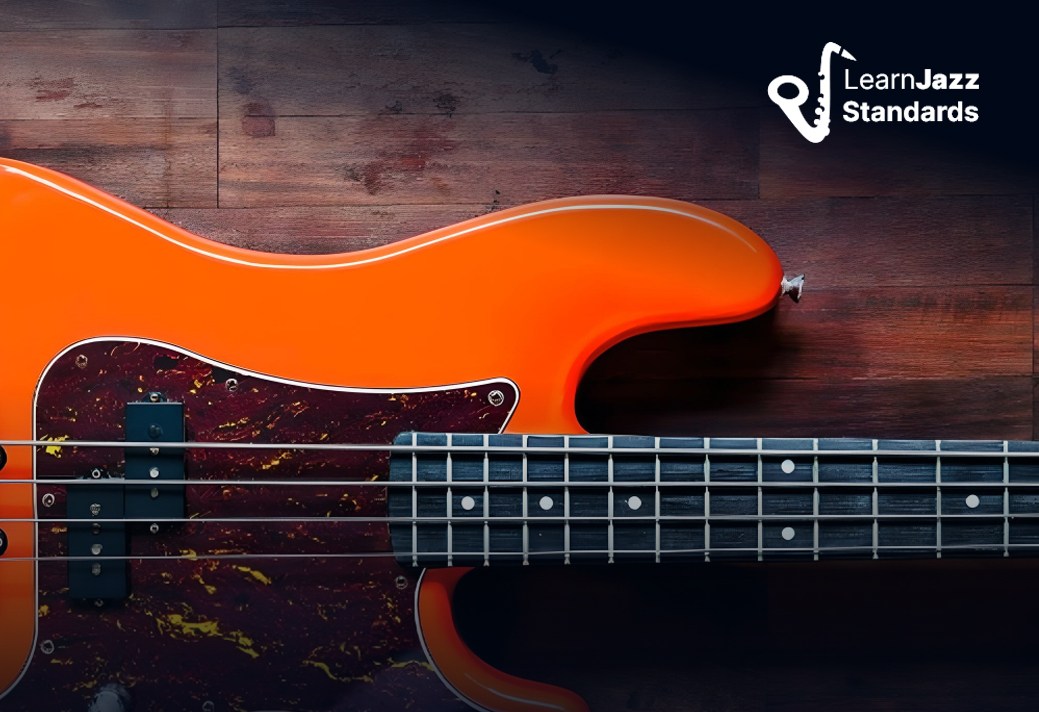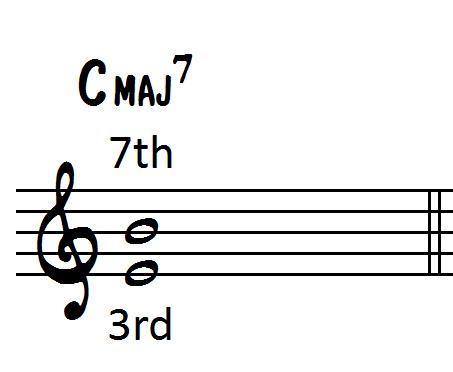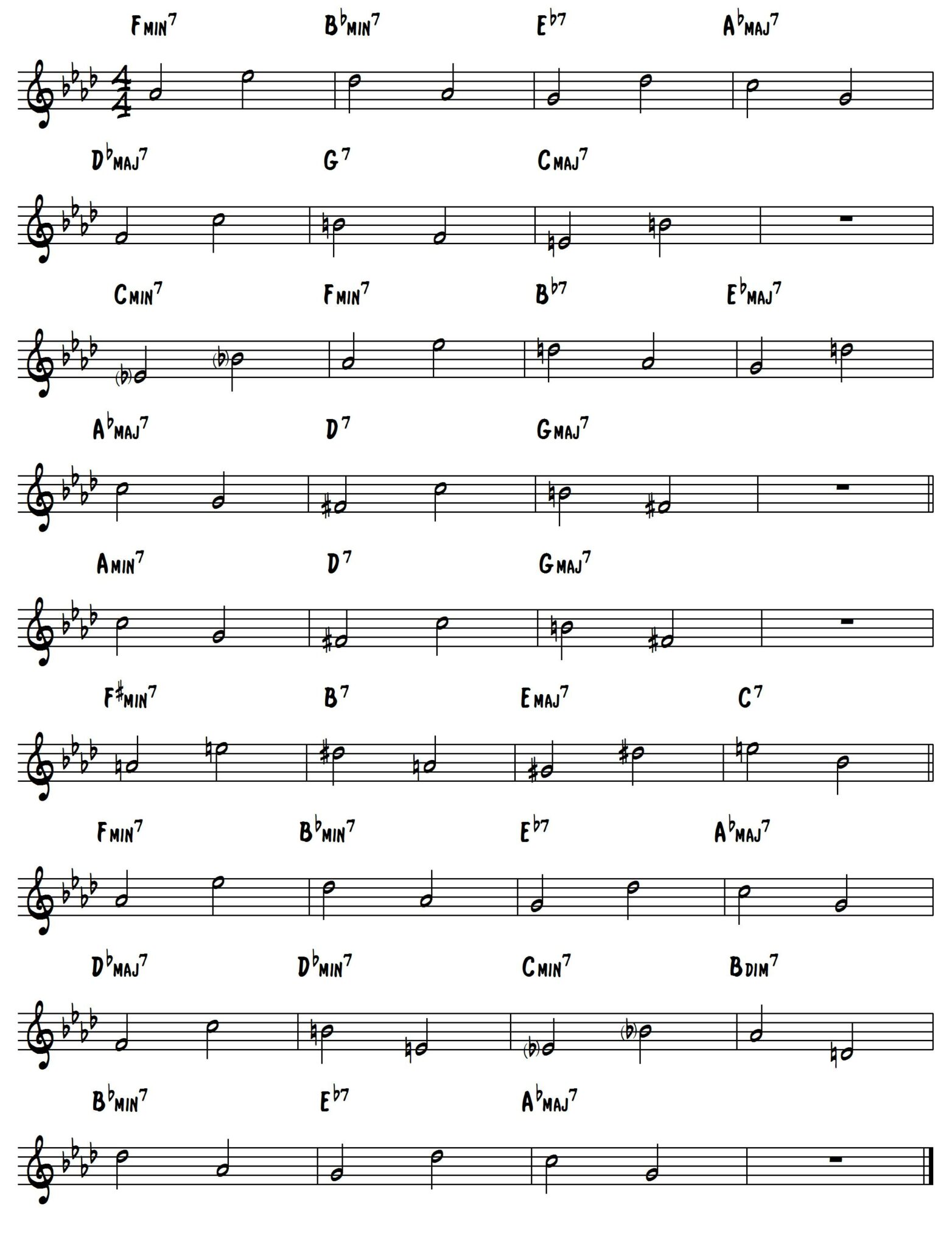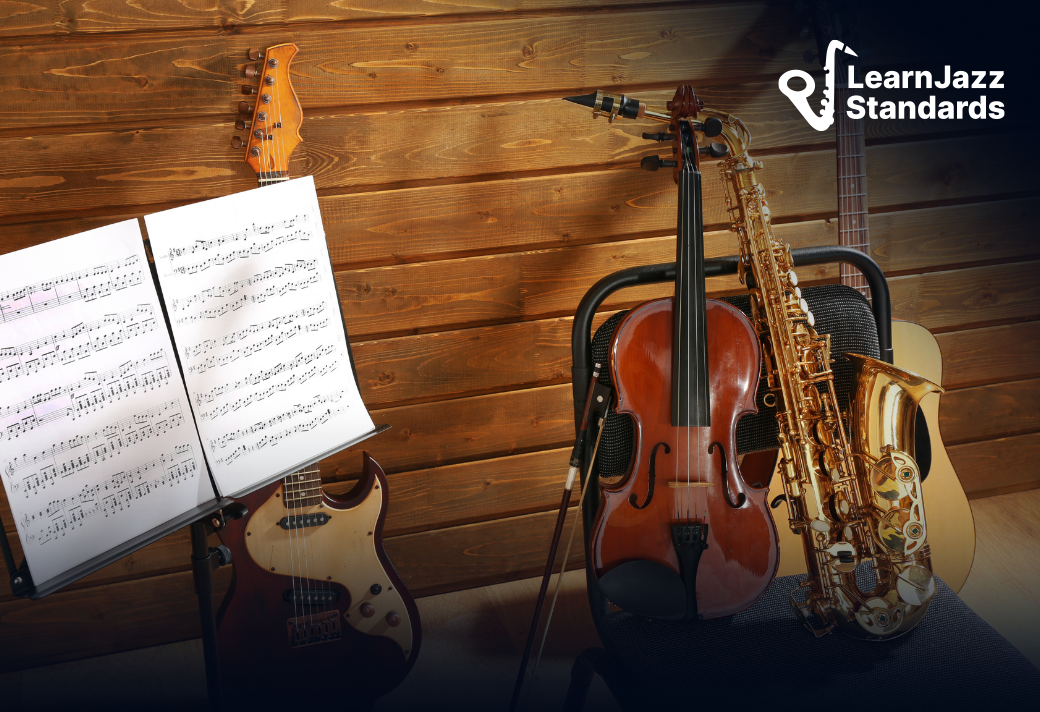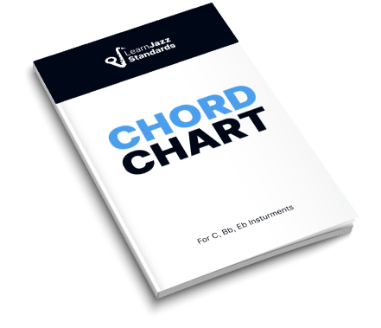Welcome to episode 53 of the LJS Podcast where today we are talking about how you can improve your jazz solos by using guide tones. One of the big questions students have is how do I navigate chord changes in my improvisation? Guide tones are a great springboard into identifying the important chord tones to focus on. Listen in!
Listen to episode 53
Enjoy listening to this podcast?
If you get value from the LJS Podcast, help us out by leaving a rating and review on iTunes or your favorite podcast service. Thanks for your help!
What is a guide tone?
Guide tones are notes within a chord structure that both help define a chord, and can be used to transition to another chord melodically.
Crash course on 7th chord formulas:
Major 7: Root-3rd-5th-7th
Dominant 7: Root-3rd-5th-b7
Minor 7: Root-b3-5th-b7
Half diminished: Root-b3-b5-b7
Diminished 7: Root-b3-b5-bb7
The 3rds and 7ths are the important chord tones that help define the difference between different 7th chords. The 3rds and 7ths are the guide tones.
3rds and 7ths in a C major 7 chord:
Take a look at the guide tones in a ii-V-I chord progression. If you don’t understand chord progressions and the numbering system, check out How to Harmonize a Major Scale with 7th Chord.
Here’s what they look like separated out:
What is voice leading?
Voice leading is the smooth melodic movement of notes (or voices) from one chord to the next.
Here’s voice leading guide tones in action:
The 3rds and 7ths ii-V-I Rule:
When chords are cycling in 4ths(such as in the case of a ii-V-I):
- The 3rd of a minor 7 will always be the 7th of the proceeding dominant 7 chord
Ex.
Dmin7: 3rd= F
G7: 7th= F
- The 3rd of a dominant 7 will always be the 7th of the proceeding major 7 chord.
Ex.
G7: 3rd= B
Cmaj7: 7th= B
The 3rds and 7ths Half Step Rule:
- When chords are cycling in 4ths, the 7th of a minor 7 chord will always resolve to the 3rd of a dominant 7 chord by a half step.
Ex.
Dmin7: 7th= C
G7: 3rd= B
- The 7th of a dominant 7 chord will always resolve to the 3rd of a major 7 chord by a half step.
Ex.
G7: 7th= F
Cmaj7: 3rd= E
Take a look at this lick that connects guide tones. For demonstration purposes, there is no chromaticism and the 3rds and 7ths resolve to each other.
Check out what happens when you map out the guide tones to the jazz standard All The Things You Are. Play through this and see if you can hear the chord changes just by playing the 3rds and 7ths in a voice lead fashion.
Have anything to add to today’s episode? Leave a comment below.
Be sure to sign up for our newsletter to get notified when our new eBook Zero to Improv is released in April 2017!
Important Links:
LJS Inner Circle Membership
Free Guide to learn standards by ear: Learn Jazz Standards the Smart Way


